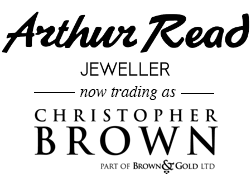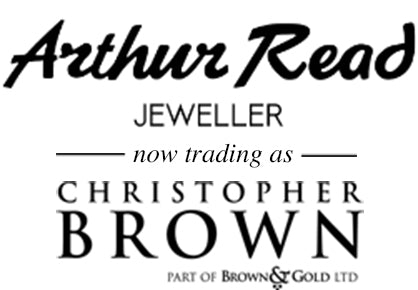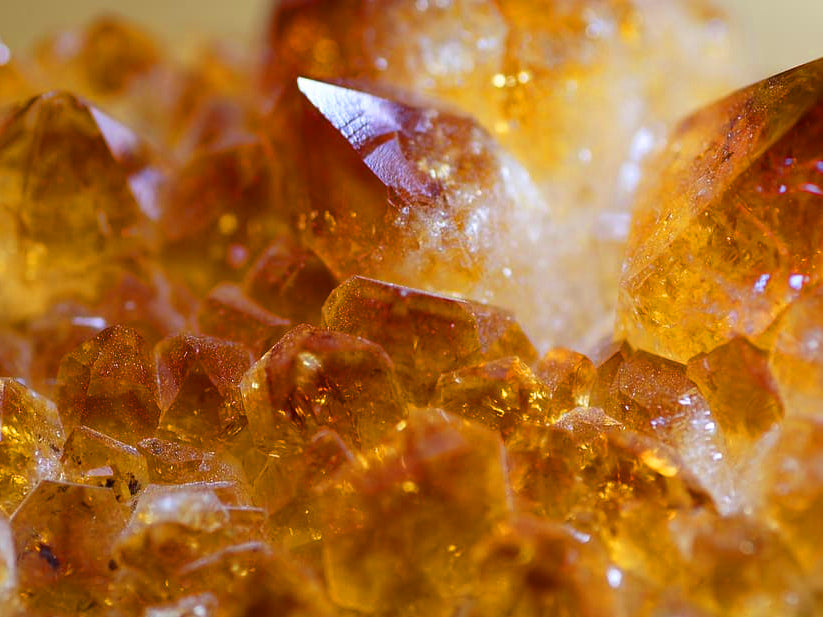Guide to Citrine
- 08 Nov 2019
- Daniel Read
Having covered some of the more exotic gemstones, it's now time to look at one of the more commonly seen gems, and one that is often overlooked in modern jewellery. The stone referred to is quartz, and specifically, the variety known as citrine.
As the name suggests, citrine is the yellow to orange - and sometimes approaching brown - colour of quartz. The name is possibly derived from the French for yellow, citron, or maybe from the Latin citrus, associated nowadays with certain yellow fruit
Citrine can also be known by an alternative, although less commonly used name nowadays, this being 'Merchant's Stone'. This is derived from the belief that it is a 'success stone', and will bring the wearer success and profitability in business. Certain folklore also shows that citrine is a stone associated with a range of medical health issues it can be a positive influence on the heart, kidneys, and liver, as well as dispelling digestive problems, although nowadays it is more likely to be seen in a jewellers than a pharmacy!

Historically citrine is closely tied to another stone - topaz. Both can be varying shades of yellow, and look very similar hence the confusion throughout history between the two. The two stones have been almost interchangeable through time, and it wasn't really until the 1850's that citrine gained a higher level of recognition, when Queen Victoria's attraction to the gem, and her preference for the summer retreat of Balmoral, saw the stone gain popularity in Scottish jewellery.
Although quartz is possibly the most abundant mineral on the planet, not all of it is gem quality, and not all is readily available in the attractive colours sought by the discerning buyer. Much of the citrine seen in the market today is created by heat treating amethyst, the heat converting the nature of the iron traces within the quartz to a state whereby the purple colouration is replaced by yellow to orange. As you can imagine, different levels of heating, and different lengths of time exposed to this heat could cause the range of shades seen today - much like the range of blues that make up the category of 'blue topaz'.

Citrine can occur in large crystals, and it's not unheard of for these to weigh several kilos, and sometimes these are virtually flawless gem-grade material. Three of the largest faceted citrines are housed in the Art Natura in Spain, these being the 'Malaga', weighing 20,200 carats (that's just over 4kg), an oval cut measuring 20cm; the 'Sol del Sur', another oval weighing 8,200 carats, and the 'Soledad', a 6,705ct emerald cut. All are considered near flawless.
Gemmologically speaking, all varieties of quartz have the same chemical formula, which is a very basic and easy one silicon dioxide, or Si02. It is then down to the impurities in the structure that interact with light to produce the range of colours and optical effects. Each variety has its own name, based on the colour, or, occasionally the impurity that causes that colour. Natural citrine can be hard to source as gem quality crystals, with localities being places such as Brazil and Africa, but even in these localities much of the material recovered is of low quality. Because of this, most of the stones have been created by heat treatment of amethyst. This is a permanent and stable treatment, and allows us to benefit from a range of colours, from pale yellows through to almost browns.

For testing purposes, and for the average gemmologist on the sales front, all test results are the same for citrine as for the untreated amethyst. Refractive index still lies at 1.54-1.55, specific gravity at 2.63-2.65 and when testing under the polariscope, the diagnostic bulls-eye interference figure is still just as likely to be there. But that's science talk, and at the end of the day. jewellery isn't about that, it's about feeling good and enjoying a gem that is reminiscent of a summer sun can't be bad!
Taken from The Guild of Jeweller's Coloured Stones Guide Vol.1



Comments
combigan eye drops generic buy generic combigan
combigan eye drops 2% combigan generic
cyclomune 0.1% eye drops cost buy cyclosporine online
priligy 30 priligy price
erectile injection therapy plan https://canadaerectiledysfunctionpills.com/ erectile dysfunction pills